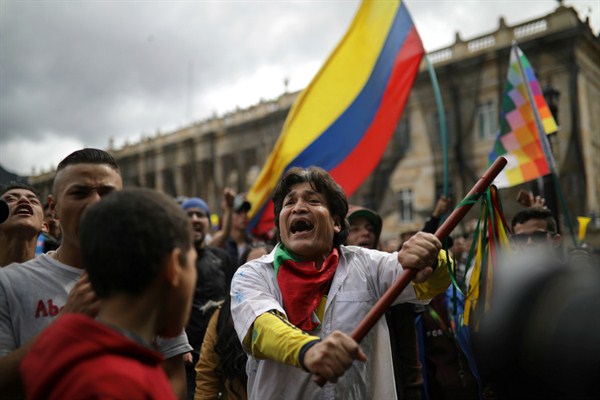Demonstrators have taken to the streets over the past three weeks in a series of massive antigovernment rallies in Colombia, making it the latest Latin American country to be convulsed by protests. While the ongoing unrest has not yet reached the scale of other recent crises elsewhere in the region, such as Bolivia or Chile, it nonetheless poses a stiff challenge to conservative President Ivan Duque, who has come under criticism in recent months for his unpopular economic and security policies.
The demonstrations began with a general strike on Nov. 21, with hundreds of thousands of people gathering in cities across Colombia to air a variety of grievances against Duque’s government. These include rampant corruption, growing unemployment, routine killings of indigenous and social leaders, proposed reforms to the country’s tax and pension systems, and the slow and patchy implementation of Colombia’s landmark 2016 peace deal with the FARC, the country’s largest guerilla group.
That day’s protests, some of the largest in a generation, were attended by a diverse cross-section of Colombian society, including students, teachers, union leaders, pensioners and members of indigenous communities. They were largely peaceful, although riot police clashed sporadically with demonstrators in the capital, Bogota. The following day, the government imposed a curfew across the city for the first time in over four decades, but with little effect. Since then, at least four people have died and hundreds more have been injured in connection with the protests.

